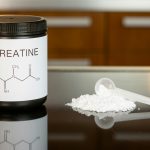
Strength Training as an Untapped Asset in Professional Performance
In an era where stress-related burnout, cognitive overload, and sedentary lifestyles undermine workplace performance, one solution remains conspicuously absent from many wellness strategies: resistance training.
Despite its proven benefits for energy metabolism, stress resilience, and cognitive health, strength training remains underutilized in higher education and corporate settings. This presents not just a health gap—but a strategic opportunity—for personal trainers looking to expand their influence, scale their services, and build profitable, mission-aligned business models.
What You’ll Learn in This Article
- Why muscle mass and strength serve as critical markers of professional longevity
- How strength training impacts cognitive function, fatigue, and stress regulation in high-performing individuals
- The economic case for resistance training in the workplace and faculty wellness programs
- How to frame resistance training to appeal to executive and academic audiences
- Strategies trainers can use to enter this growing, high-retention market
The High Cost of Inactivity in Faculty and Corporate Settings
Workplace wellness has historically prioritized weight management and aerobic activity. Yet research shows that these programs often fail to generate lasting physiological change—especially among professionals exposed to long hours of cognitive labor and physical inactivity (Tolea & Galvin, 2015).
Resistance Training: The Missing Link in Traditional Wellness Programs
Faculty and corporate wellness programs have historically emphasized low-impact or passive interventions—yoga, step-count initiatives, guided meditation, or generalized fitness tracking. While these have value, they fail to create the adaptive stress required to build resilience, both physiologically and cognitively…
Cognitive ROI: Strength Training for Mental Clarity and Executive Function
Professionals and academics are knowledge workers. Their value lies not in physical output, but in mental agility, decision-making, and creativity…
The ROI for Institutions: Why HR and Wellness Directors Should Care
Let’s quantify the value of strength training beyond individual outcomes. A meta-analysis published in Health Affairs (Baicker et al., 2010) found that comprehensive workplace wellness programs yield an average return of $3.27 in medical cost savings and $2.73 in reduced absenteeism per $1 spent…
Strategic Entry Points for Trainers
To enter this market successfully, personal trainers must shift from generalist to specialist. That means:
- Framing your services in terms of energy management and productivity—not just fitness
- Customizing protocols for client schedules
- Offering workshops or semester-based training packages
- Tracking professional performance markers
Business Model Advantages for Trainers
Working with faculty and corporate clients offers several distinct advantages over traditional fitness populations:
- Higher lifetime value per client
- Greater consistency and retention
- High referral potential
- Opportunities for premium pricing
Final Call to Action: Reframe Strength, Redefine Success
This is a moment of strategic realignment for the fitness industry. As cognitive labor replaces physical labor in the economy, the need for physiological resilience to support cognitive output becomes a non-negotiable…
For personal trainers, the takeaway is clear:
- Don’t sell fitness—sell outcomes.
- Don’t talk reps—talk resilience.
- Don’t chase volume—pursue value.
References
Baicker, K., Cutler, D., & Song, Z. (2010). Workplace wellness programs can generate savings. Health Affairs, 29(2), 304–311. https://doi.org/10.1377/hlthaff.2009.0626
Chen, L., Nelson, D., Zhao, Y., Cui, Z., & Johnston, J. (2013). Relationship between muscle mass and muscle strength, and the impact of comorbidities: A population-based, cross-sectional study of older adults in the United States. BMC Geriatrics, 13(1), 74. https://doi.org/10.1186/1471-2318-13-74
Dam, R., Ancum, J., Verlaan, S., Scheerman, K., Meskers, C., & Maier, A. (2018). Lower cognitive function in older patients with lower muscle strength and muscle mass. Dementia and Geriatric Cognitive Disorders, 45(3–4), 243–250. https://doi.org/10.1159/000486711
Deshmukh, A. (2016). Proteomics of skeletal muscle: Focus on insulin resistance and exercise biology. Proteomes, 4(1), 6. https://doi.org/10.3390/proteomes4010006
Dlamini, M., & Khathi, A. (2023). Prediabetes-associated changes in skeletal muscle function and their possible links with diabetes: A literature review. International Journal of Molecular Sciences, 25(1), 469. https://doi.org/10.3390/ijms25010469
Pereira, R., Tadinada, S., Zasadny, F., Oliveira, K., Pires, K., Olvera, A., … & Abel, E. (2017). OPA1 deficiency promotes secretion of FGF21 from muscle that prevents obesity and insulin resistance. The EMBO Journal, 36(14), 2126–2145. https://doi.org/10.15252/embj.201696179
Smolarek, A., Ferreira, L., Mascarenhas, L., McAnulty, S., Varela, K., Dangui, M., … & Souza, T. (2016). The effects of strength training on cognitive performance in elderly women. Clinical Interventions in Aging, 11, 749–754. https://doi.org/10.2147/CIA.S102126
Storoschuk, K., Gharios, R., Potter, G., Galpin, A., House, B., & Wood, T. (2023). Strength and multiple types of physical activity predict cognitive function independent of low muscle mass in NHANES 1999–2002. Lifestyle Medicine, 4(4). https://doi.org/10.1002/lim2.90
Tolea, M., & Galvin, J. (2015). Sarcopenia and impairment in cognitive and physical performance. Clinical Interventions in Aging, 10, 663–671. https://doi.org/10.2147/CIA.S76275
Wang, L., Yang, S., Lu, Y., Hao, W., Wang, J., Yu, S., … & Zhang, Y. (2019). Hypoxia preconditioning promotes endurance exercise capacity of mice by activating skeletal muscle NRF2. Journal of Applied Physiology, 127(5), 1267–1277. https://doi.org/10.1152/japplphysiol.00347.2019
Xu, Z., Fu, T., Guo, Q., Zhou, D., Sun, W., Zhou, Z., … & Gan, Z. (2022). Disuse-associated loss of the protease LONP1 in muscle impairs mitochondrial function and causes reduced skeletal muscle mass and strength. Nature Communications, 13(1). https://doi.org/10.1038/s41467-022-28557-5






